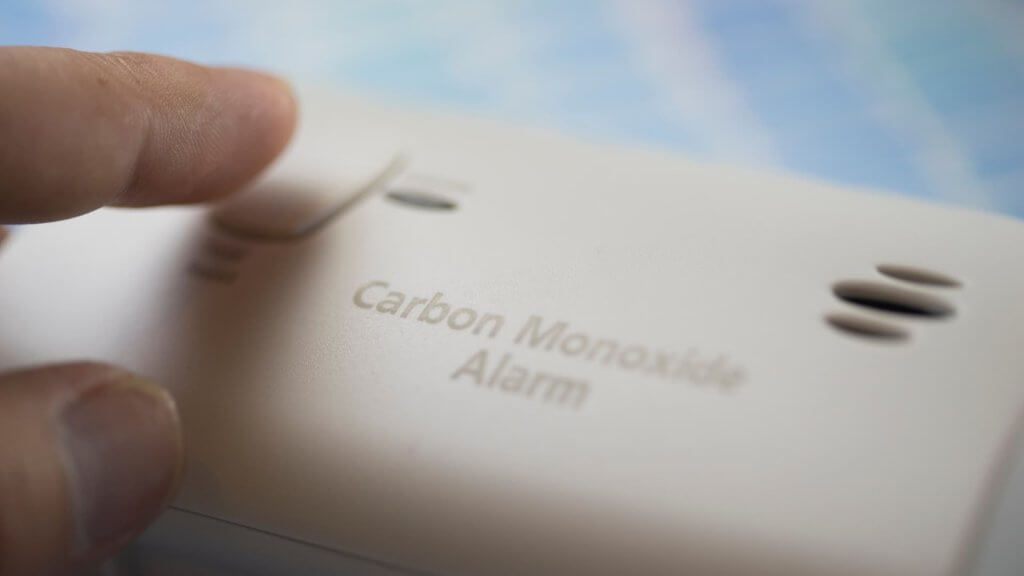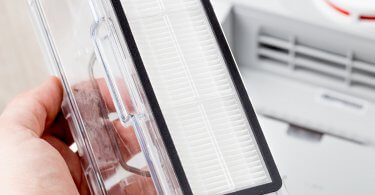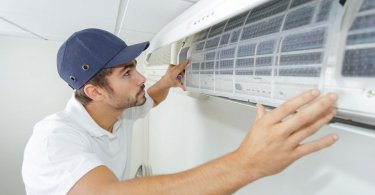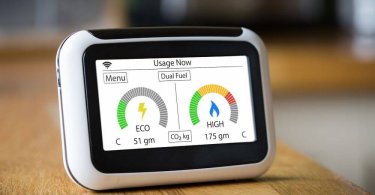Carbon monoxide is an odorless and poisonous gas that’s released when gasoline and other fuels are burnt.
When you breathe in carbon monoxide, it enters your blood and combines with hemoglobin forming carboxyhemoglobin. If too much carbon monoxide enters your body, your blood may not be able to carry enough oxygen to the vital organs of your body.
This can cause the cells and tissues in the body to die. Failure of important organs can lead to death.
According to the CDC, 430 people die each year in the United States due to accidental inhalation of excessive carbon monoxide. Moreover, nearly 50,000 people in the United States visit the ER after inhaling carbon monoxide gas.
So, can opening a window stop carbon monoxide poisoning? Opening one window will not remove enough carbon monoxide gas from your home when there’s a leak.
You have to open more than one window to provide good ventilation to your home and reduce the toxic effects of carbon monoxide.
Let’s talk more about steps you can take to prevent carbon monoxide poisoning.

- What Are the Symptoms of Carbon Monoxide Poisoning?
- What Should I Do if I Experience Carbon Monoxide Poisoning?
-
How Can I Prevent Carbon Monoxide Poisoning?
- 1. Inspect Your Appliances Every Year
- 2. Select Your Appliances Wisely
- 3. Don’t Operate a Portable Stove or Charcoal Grill Inside Your House
- 4. Emergency Generators
- 5. Don’t Use Your Gas Oven As a Heater
- 6. Inspect Your Fuel Appliances Regularly
- 7. Don’t Warm Up Your Vehicle in a Closed Garage
- 8. Make Your House Well Ventilated
- 9. Don’t Burn Charcoal in a Closed Space
- 10. Never Sleep in a Room That Has a Paraffin Heater
- 11. You Can Install an Extractor Fan
- How Much Will It Cost Me to Avoid Carbon Monoxide Poisoning?
- How Much Carbon Monoxide Will Make Me Sick?
- What Should I Do When Carbon Monoxide Detector Sounds an Alarm?
- Who Are Most at Risk of Carbon Monoxide Poisoning?
- Final Thoughts
What Are the Symptoms of Carbon Monoxide Poisoning?
Below are a few signs and symptoms of carbon monoxide poisoning. If you feel any of these happening after potential carbon monoxide exposure, you should take action immediately.
- Weakness
- Headache
- Confusion
- Losing consciousness
- Blurred vision
- Vomiting
- Losing muscle coordination
- Feeling sick
- Getting exhausted
- Difficulty to breath
- Stomach pain
If you are using a heater or oven at home, you should call a professional to check what appliance is causing the leak. Long time exposure to carbon monoxide can cause severe chest pain and even a heart attack. In some cases it may even lead to death.
What Should I Do if I Experience Carbon Monoxide Poisoning?
If you think that you have been exposed to carbon monoxide, then either call 911 for help or immediately go to the hospital yourself. The doctor will test your blood to determine if you have had carbon monoxide poisoning.
If the doctor confirms, then you will be given an oxygen mask to reduce the effects of carbon monoxide. Unfortunately, the blood test will not show the severity of the poisoning.
The doctor will treat you based on your overall health condition and how long you have inhaled the carbon monoxide gas.
How Can I Prevent Carbon Monoxide Poisoning?
1. Inspect Your Appliances Every Year
You need to inspect appliances like your water heater and furnace that use gasoline or other fuels to ensure all the components are in good working condition.
Try to check your device at least once or twice a year. It’s best to check in the summer season so that your appliances will be working without any issue in winter.
2. Select Your Appliances Wisely
You should select appliances that vent exhaust gases outside.
3. Don’t Operate a Portable Stove or Charcoal Grill Inside Your House
You should not operate a portable stove or charcoal grill inside your home because it produces a lot of carbon monoxide and smoke that is harmful to your health.
4. Emergency Generators
Your emergency generators should be at least 20 feet away from your doors and windows.
5. Don’t Use Your Gas Oven As a Heater
It’s good to use a gas oven at home. But don’t use it as a replacement for your heater. Otherwise, it will leak carbon monoxide gas into your home, which can be very dangerous.
6. Inspect Your Fuel Appliances Regularly
If you find soot, rust, or water particles on fuel appliances, you need to repair those.
7. Don’t Warm Up Your Vehicle in a Closed Garage
Drivers usually need to warm up their cars in the winter season. But don’t run the engine in a closed space. Carbon monoxide is a by-product of exhaust gases. If too much carbon monoxide builds up in a closed area, it can put your life in danger.
8. Make Your House Well Ventilated
You need to regularly open the doors and windows to allow enough fresh air to enter your home. It will prevent the accumulation of carbon monoxide.
9. Don’t Burn Charcoal in a Closed Space
You should not burn charcoal in a closed space. Remember that burning charcoal can produce carbon monoxide, which is dangerous for your life.
10. Never Sleep in a Room That Has a Paraffin Heater
You should not sleep in a room that has a paraffin heater. Incomplete fuel combustion can produce carbon monoxide.
11. You Can Install an Extractor Fan
Try to install an extractor fan in the kitchen to prevent carbon monoxide accumulation.
How Much Will It Cost Me to Avoid Carbon Monoxide Poisoning?
Carbon monoxide gas is a colorless and odorless gas. So, it is usually referred to as a silent killer because it cannot be detected by human beings.
You can install a carbon monoxide detector in your home, costing you approximately $100. These devices are widely available and can either be battery or AC-operated. Check out this carbon monoxide detector available on Amazon.
The carbon monoxide detector will passively detect the presence of carbon monoxide and prevent poisoning. It has an alarm system just like a smoke or fire alarm that alerts you before a dangerous level of carbon monoxide starts accumulating in your home.
Most carbon monoxide detectors have a biomimetic sensor. This sensor is a gel-like substance that changes its color by absorbing carbon monoxide. The color change will trigger the alarm to alert you.
How Much Carbon Monoxide Will Make Me Sick?
People start to feel the effects of carbon monoxide when exposed to a concentration of 70ppm. So it is vital to have carbon monoxide detectors at home. It will alert you even when there is a low level of carbon monoxide in your surroundings.
What Should I Do When Carbon Monoxide Detector Sounds an Alarm?
1. Don’t Panic
First of all, you should not panic when you hear the alarm. Your first step should be to stop all the heating appliances in your home.
2. Open All the Doors and Windows of Your House
You need to open all the doors and windows to let a sufficient amount of air in and neutralize the carbon monoxide gas.
3. Go Outside
Go outside and check your and your family’s health condition. If you notice symptoms like vomiting, flu, or severe headaches, call 911 immediately.
4. Do Not Re-Enter Your House
You should not re-enter your house till the carbon monoxide alarm stops sounding.
5. Contact a Professional
You should contact any professional to evaluate the appliances which burn fossil fuels like a furnace, water heater, or stove in your house. It will help you in preventing future accidents.
Who Are Most at Risk of Carbon Monoxide Poisoning?
All are at risk of carbon monoxide poisoning, but some groups are at a higher risk than others. Below are some groups of people who may have an increased risk of carbon monoxide poisoning:
- Pregnant women.
- Individuals who have breathing problems, anemia, or heart disease.
- Individuals who already have high carbon monoxide levels in their lungs, like the people who smoke cigarettes regularly.
Final Thoughts
Inhaling excess carbon monoxide can lead to death. A person may die while sleeping or in an unconscious state before experiencing signs or symptoms of inhaling carbon monoxide.
So, it’s best to keep all the doors and windows open if you use a kerosene heater or other fossil-fuel-burning appliances. Moreover, use a carbon monoxide detector at home to protect you and your loved ones during sleep.





Leave a Comment